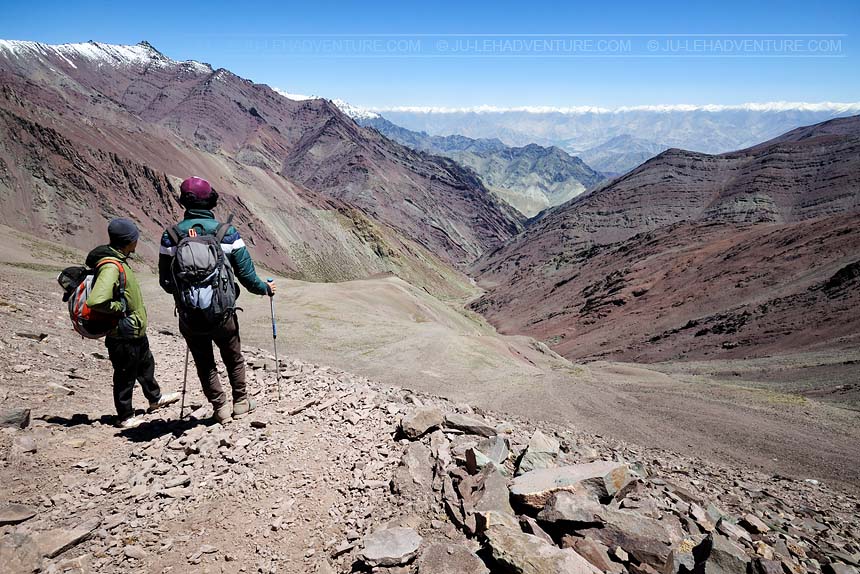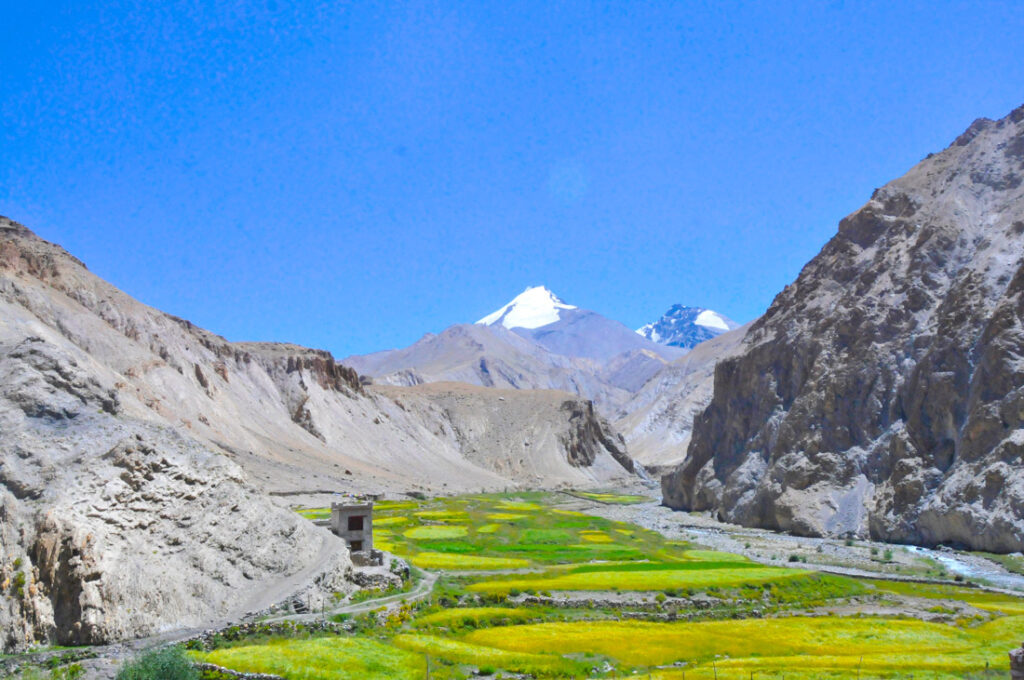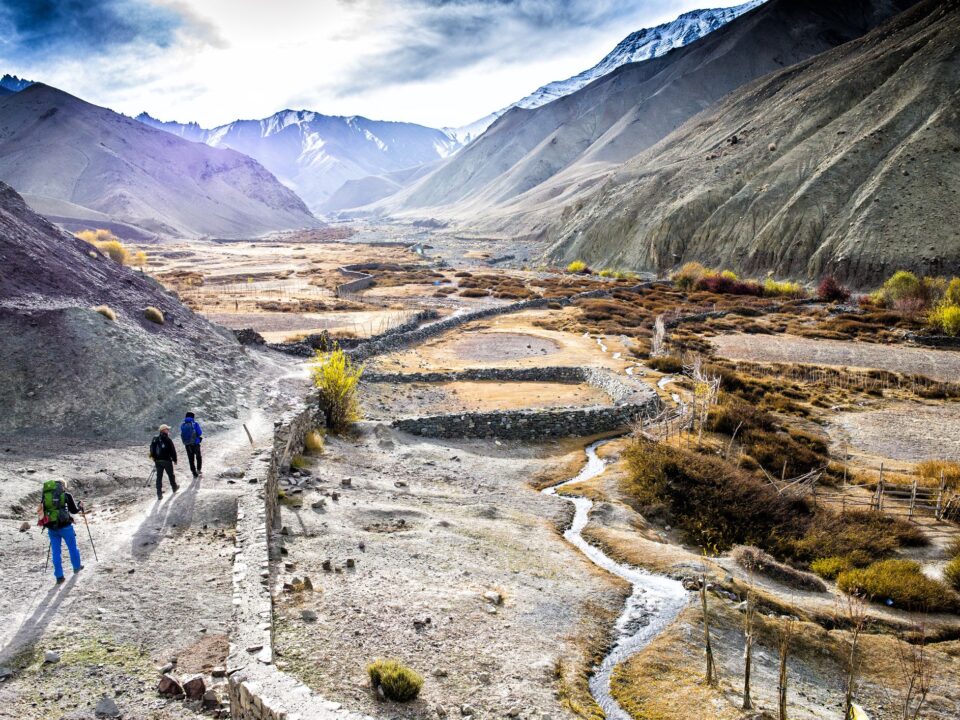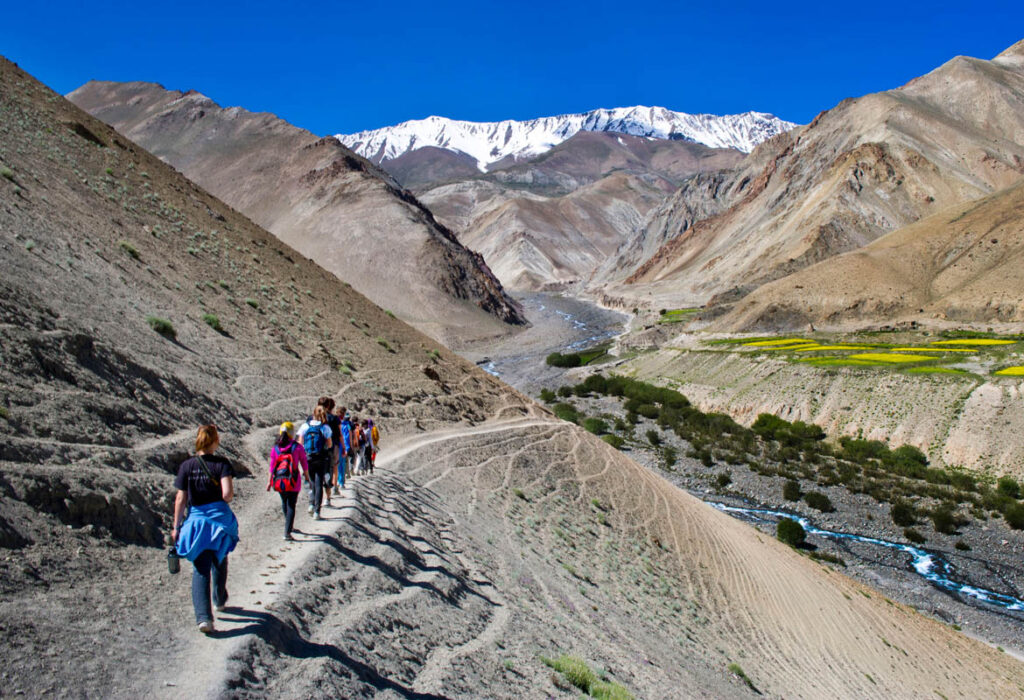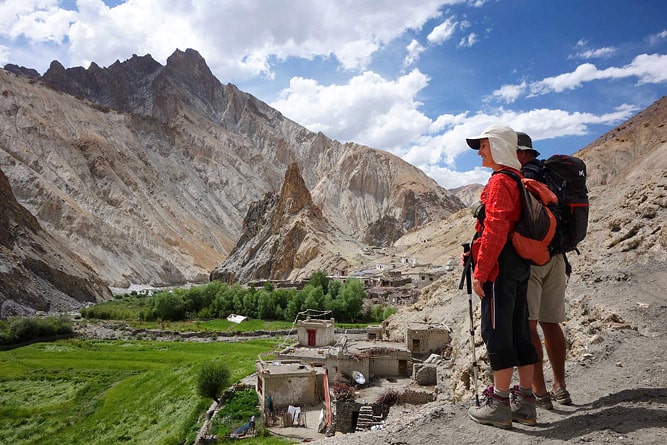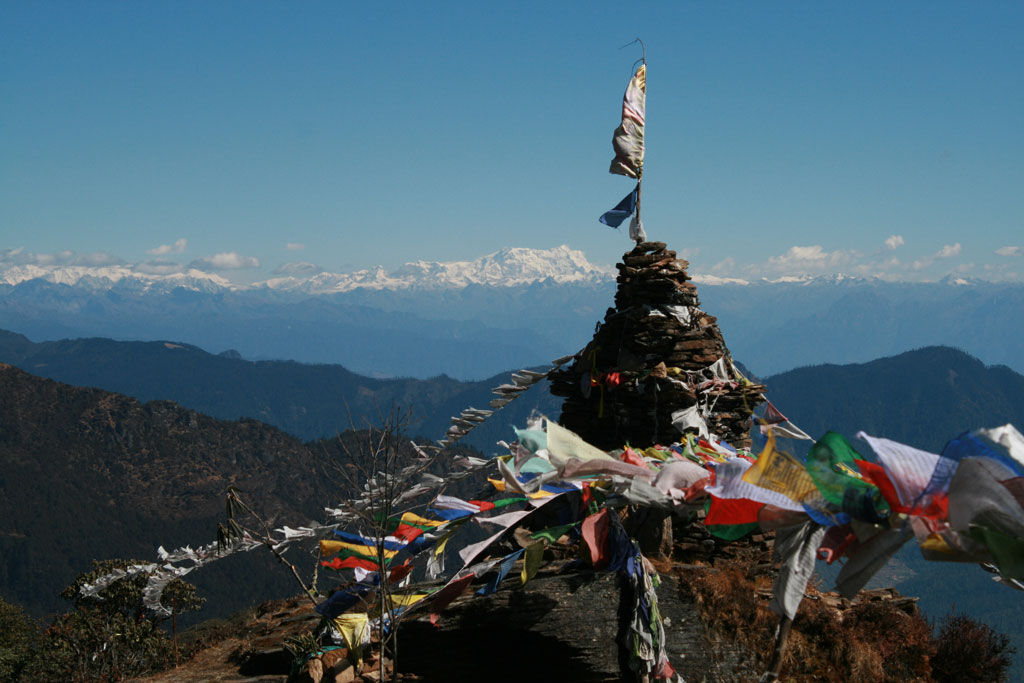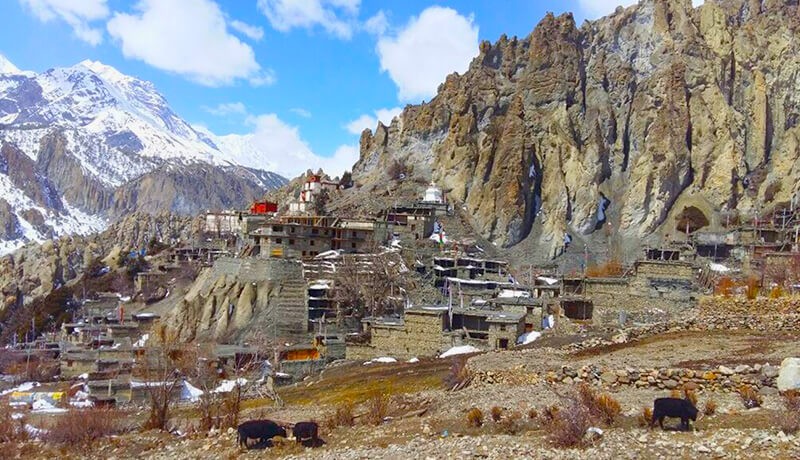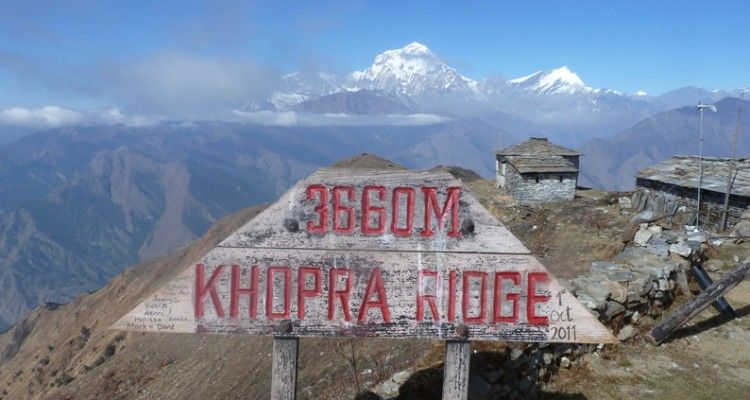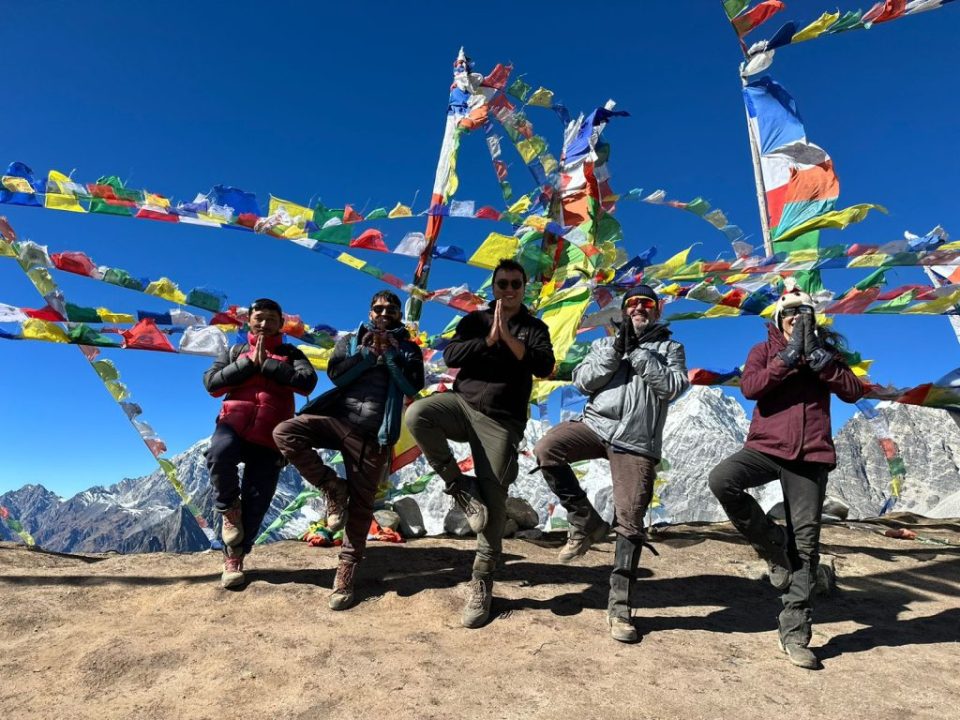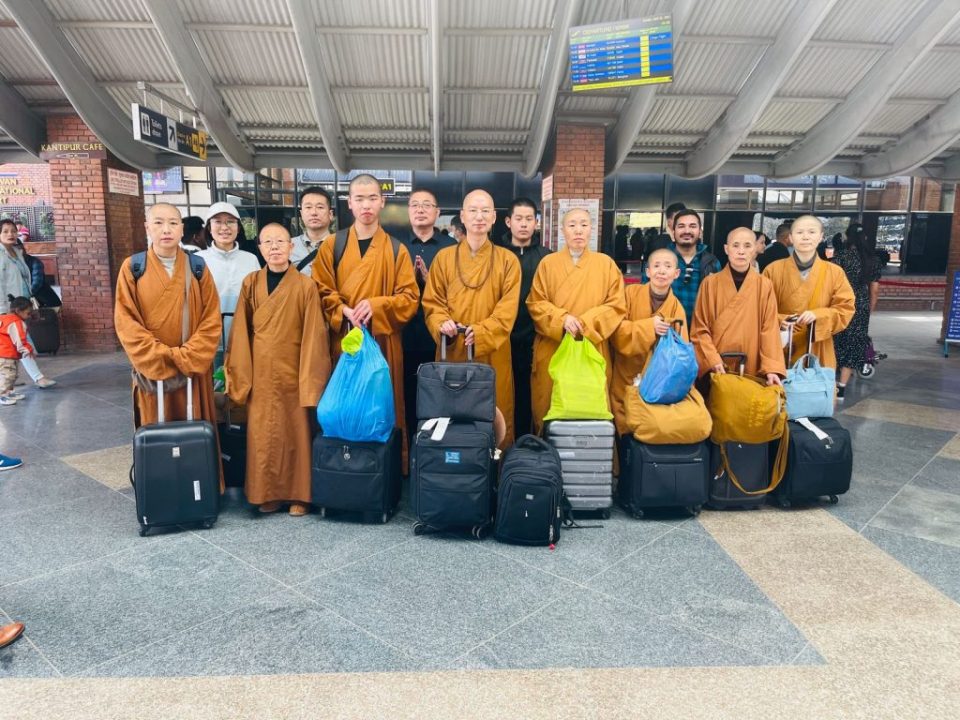Ladakh Markha Valley Trek- 12 Days
Trip Introduction
The Ladakh region, also known as the “Land of High Passes,” is located in the Indian state of Jammu and Kashmir and is a barren but still beautiful region. It has a shared border with Tibet. Ladakh is also called a high-altitude cold desert. It is bounded on the north by the Kunlun Mountains and the south by the Himalayas. It is a Tibetan Buddhist cultural center. Its natural features are primarily high plains and deep valleys. Ladakh is a popular trekking destination due to its scenic beauty, rugged terrain, majestic mountains, and the challenge of roughing it.
The Markha Valley trek is one of Ladakh’s most diverse and popular treks. It is a beautiful river valley in Hemis National Park. The trail provides spectacular views of Mt. Kang Yatse. It provides stunning views of the surrounding snow-capped mountains. It is a magnificent and unexplored Himalayan wonderland. It is one of the places that is assumed to be heaven. The trail crosses many rivers, some of which are waist deep, as well as the high pass of Kongmaru la.
Your 12-day journey begins with a flight to Leh. The flight lasts approximately 1 hour and 15 minutes. You will travel around Leh. It takes about 20 minutes to drive from Leh to Spituk. Spituk is the trek’s starting point. From there, you’ll make your way to Zingchen. You will pass through the Ganda La Pass. You will travel through several villages along the way, including Skiu, Markha, Hankar, and Nimaling. To reach Shang Sumdo village, you will need to cross the Kongmaru La pass, which is the highest point of the trek. You will then descend toward Hemis, where you will visit the Popular Hemis Monastery. Drive toward Leh, the trek’s endpoint.
Trip Facts
| Country | India |
| Region | Ladakh |
| Duration | 12 Days |
| Grade | Moderate |
| Maximum Altitude | 5,263m/17,267ft. |
| Best season | Apr, May, Jun, Jul, Aug, Sept, Oct |
Trip Highlights
- Enjoy a Scenic Flight to Leh
- Walk in the Hemis National Park.
- Experience the Tibetan Buddhist Culture.
- Experience the Mountain Life.
- Witness the Wild animals like Himalayan Blue sheep, Ibex, Lammergeier, and Gloden Eagle.
- Enjoy the view of Mt. Kang Yatse.
Is this trek appropriate for you?
- The Markha Valley Trek is the Moderate Trek. You can easily complete this trek if you are physically and mentally prepared and willing to do so.
- You will be Trekking for 8 Days. The Path can be completed in as little as 3 hours as much as 8 hours.
- The walk is not tricky, there is no Climbing or Scrambling but the path is rocky and hilly.
- Each day you will cover 200 to 400 meters in height while trekking. The highest point in the trek you will reach on the trek is 5,263m.
- The weather and Remoteness of this trek, as well as dealing with the high altitude, require a slow pace and the need to stay hydrated.
Itinerary
| Day | Activities | Duration |
| 1. | Arrival in Delhi (36m/118ft) | |
| 2. | Fly to Leh (3,500m/11,482ft) and Leh sightseeing. | |
| 3. | Drive from Leh to Spituk (3,307m/10,849ft) and Trek to Zingchen (3,402m/11,161ft) | 5-6hrs |
| 4. | Trek from Zingchen to Yurutse (4,148m/13,608ft) | 4-5hrs |
| 5. | Trek from Yurutse to Skiu (3,366m/11,043ft) via Ganda La Pass (4,961m/16,276ft) | 7-8hrs |
| 6. | Trek from Skiu to Markha (3,760m/12,335ft) | 6-7hrs |
| 7. | Trek from Markha to Hankar (4,030m/13,221ft) | 4-5hrs |
| 8. | Trek from Hankar to Nimaling (4,841m/15,882) | 5-6hrs |
| 9. | Trek from Nimaling to Shang Sumdo (3,680m/12,073ft) via Kongmaru La Pass (5,260m/17,257ft) | 7-8hrs |
| 10. | Trek from Shang Sumdo to Hemis (3,678m/12,066ft) and Drive to Leh (3,500m/11,482ft) | 3-4hrs |
| 11. | Fly back to Delhi (36m/118ft) | |
| 12. | Departure |
Itinerary
Departure from : Kathmandu, Nepal
Arrival On : Kathmandu, Nepal
Day 1
Arrival in Delhi
You will be greeted with a warm smile when you arrive at Indira Gandhi International Airport. Our representative will greet you at the airport and transport you to your hotel. Proceed to the hotel and check in. Our guide will meet you in the evening and give you a quick overview of the trip.
Dinner and Overnight at the Hotel.
Day 2
Fly to Leh and Leh sightseeing.
After breakfast. Check out from the hotel and transfer you to the airport for a flight to Leh. The flight to Leh from Delhi is just about 1 hour 15 minutes. When you arrive in Leh, our representative will meet you and take you to the hotel, where you will be assisted in checking in. Rest in the hotel for some time and enjoy your lunch, then depart for Leh sightseeing. Visit the Thiksey Monastery, the largest monastery in Central Ladakh. From there, go to Shanti Stupa, which has a beautiful view of the valley. In the evening explore the Market.
Dinner and Overnight at the Hotel.
Day 3
Drive from Leh to Spituk and Trek to Zingchen.
Today, after breakfast, we will depart for Spituk. It takes 20 minutes to drive from Leh to Spituk. Spituk is the trek’s starting point. You will then begin your journey towards Zingchen. Before beginning the trek, pay a visit to the Spituk Gompa. You’ll be walking for 5 to 6 hours. Walk along the Indus River from Spituk to Zingchen on the dirt road. Pass through the village and cross the Indus River Bridge to enter the Hemis National Park. You’ll be entering on dry ground. On the way, you’ll eat your lunch. Continue hiking toward the Zingchen gorge, where you will cross a road bridge and arrive at Zingchen Village.
Dinner and Overnight at the Tea house.
Day 4
Trek from Zingchen to Yurutse
After Breakfast leave for Yurutse. You’ll be walking for 4 to 5 hours. You’ll cross a wooden bridge over a stream and then turn left to reach the gorge. You will pass through the village of Rumbak. It takes about three hours to get to Rumbak Village. Lunch will be served on the way. Cross the wooden bridge over the stream from there. As you progress, the trail will take you through a narrow valley. From there, proceed to the Yurutse.
Dinner and Overnight at the Tea house.
Day 5
Trek from Yurutse to Skiu via Ganda La Pass
After breakfast, proceed to Skiu via the Ganda La Pass. You’ll be walking for 7 to 8 hours. You will begin a steep ascent toward the Ganda La Pass. The Prayer Flags will be visible as you approach the Lower Camp. Then proceed to the Higher Camp, which is 30 minutes away from the Lower Camp. You may see blue sheep, marmots, and snow leopards along the way. From the top, you can see the Zinchen Gorge, the Stok Mountains, and the Skiu side of the Valley. You’ll stop for lunch on the way. From there, it’s straight downhill to the Skiu valley.
Dinner and Overnight at the Tea house.
Day 6
Trek from Skiu to Markha
After Breakfast leave for Markha. You’ll be walking for 6 to 7 hours. You’ll be walking on the Flat Trail with a minor ascent. You’ll walk through small villages as you follow the river. You’ll also see the Mani walls and white stupas. You’ll arrive at Chalak Village, where you’ll eat lunch. You will continue hiking toward the Markha. As the valley’s largest village, it has about 20 families. In the evening, pay a visit to the Monastery.
Dinner and Overnight at the Tea house.
Day 7
Trek from Markha to Hankar
After Breakfast leave for Hankar. You’ll be walking for 4 to 5 hours. You will be following the river’s trail. You will cross a bridge over the rivers and hike toward Umlung, a small village with a beautiful serene Monastery. You will also be able to enjoy your lunch while seeing Mt. Kang Yatse for the first time. Hike up to Hankar, where the Tacha Monastery is located on the mountain. It is the Trek’s final village.
Dinner and Overnight at the Tea house.
Day 8
Trek from Hankar to Nimaling
After Breakfast leave for Nimaling. You’ll be walking for 5 to 6 hours. Today’s walk on the Path will be a little easy. You will cross the stone bridge. There are several diversion roads, so be aware and follow the directions while walking. On the way, you’ll eat your lunch. You will also pass by the twin Lakes. Further on, you will hike through vast grasslands and across numerous streams to reach Nimaling, the best camping spot.
Dinner and Overnight at the Camp.
Day 9
Trek from Nimaling to Shang Sumdo via Kongmaru La Pass
Start your day early today because you have a long walk ahead of you. After breakfast, hike to Shang Sumdo via the Kongmaru La Pass. You’ll be out walking for 7 to 8 hours. You will cross the trek’s highest pass, Kongmaru La Pass, from which you will have an amazing view of the Indus Valley and the Ladakh range. From there, you’ll hike down to the Shang Sumdo, a steep descent. It’s a long walk from there to the wonderful rock formations of the Shang Gorge. You’ll be able to eat your lunch on the way. You will cross the river several times before arriving at the Shang Sumdo village.
Dinner and Overnight at the Tea house.
Day 10
Trek from Shang Sumdo to Hemis and Drive to Leh
After Breakfast leave for Hemis. You’ll be walking for 3 to 4 hours. Today is the trek’s short and easy walk. You’ll be walking down a dirt road. Continue west on the Path, which travels through the Scree slopes to Hemis Monastery. After that, enjoy your lunch. Drive toward Leh from there. The drive will take approximately 1 hour and 30 minutes. After arriving in Leh, check into your hotel, relax for a while, and then go exploring in the evening.
Dinner and Overnight at the Hotel.
Day 11
Fly back to Delhi
After breakfast. Check out from the hotel and fly back to Delhi. On arrival, our representative will pick you up and transfer you to the hotel. Check into the hotel. Free for the day. You can stroll around Delhi and have shopped around the street of Chandni Chowk.
Dinner and Overnight at the Hotel.
Day 12
Departure
The 11-day journey has concluded. Today is your last day in Delhi. Our representative will have a short discussion on the trip and take your feedback after a hearty breakfast. Following this session, he will drive you to the airport in our private transportation 3 hours before your trip.
Route Map
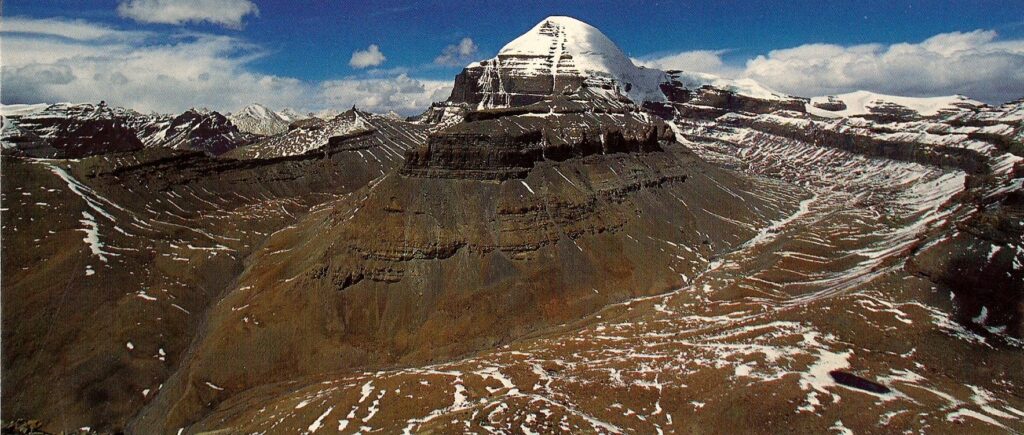
Altitude Map
What's Included
- Arrival & Departure: Airport – Hotel transfer – Airport (Pick Up and Drop on a private basis).
- Hotel Accommodation in Delhi: 2nights at Star categories hotel on Twin sharing and BB basis.
- Welcome Dinner at the restaurant in Delhi.
- Food & Lodging: 3 meals a day (Breakfast, Lunch, Dinner) along with accessible accommodation sharing during the trek.
- Permit: All necessary paper works: Spituk Forest Entry Permit.
- All government and local taxes if necessary.
- Trekking Map.
- Member transportation: – Air Transportation: Flight to Leh and while returning.
- Road Transportation: From Leh to Spituk and Hemis to Leh.
- Drinking water: A mineral water bottle per day per person.
- Guide: Government licensed Guide (English speaking) during the trek.
- Porter: Porters (2 trekkers: 1 porter) up to 15kg during the trek.
- Insurance of all involved staff.
- Comprehensive Medical kit.
What's Not Included
- Air Fare: International flight airfare.
- Tourist Visa fee.
- Extra nights’ accommodation in India. In case of early arrival or late departure, early return from Trekking (due to any reason) than the scheduled itinerary.
- Personal Insurance: Travel and high-altitude insurance, accident, Helicopter medical & emergency evacuation. *Mandatory
- Personal Expenses: Telephone calls, Internet, Toiletries, battery recharge, hot shower, laundry, soft drinks, beer, and any alcoholic beverages.
- Personal Equipment: Clothing, Packing Items or Bags, Personal Medical Kit, Personal Trekking equipment.
- Rescue Evacuation: Medical and emergency rescue evacuation costs if required. (Rescue, Repatriation, Helicopter, Medication, Medical Tests and Hospitalization costs).
Equipment List
What to bring ?
General
Tailor Your Holiday
Everyone has their own preferences in terms of destination, journey time, and budget. As a result, sticking to our plan isn't necessary. We will create a personalized itinerary for you that includes accommodations, transportation, meals, and tour guides. We guarantee you the best Tailor-made Package because this is your trip. You have the option to personalize it, as your liking. Let us Plan together to make your Vacation worth it.
Fixed Departure
Why Travel With Us?
The ideal season to travel
Spring (March, April, May):
Spring is the finest time to trek in the Ladakh region after autumn. You will enjoy the long, warm days of this season. The weather will be warmer, and the river will be full of snowmelt in the lower region. The trail will be vibrant this season because it is Rhododendron season. Along the journey, you’ll see some wildflowers.
Summer (June, July, August):
The hottest month of the summer, as well as the beginning of the monsoon season. The temperature ranges from 5 to 25 degrees Celsius. Because Ladakh is dry, there is very little chance of monsoon. It is safe to trek during the monsoon season. However, you must take precautions because the monsoon will affect the lower region, making the path slippery and the possibility of landslides.
Autumn (September, October, November):
Autumn is the best season for trekking because the skies are clear and blue. You will have the best trekking memories if the temperatures are bearable and the weather is stable. The rainfall is low during this season, and the scenery is stunning. The temperature ranges from -1 to 22 degrees Celsius.
Winter (December, January, February):
December to February is the winter season. The nights, on the other hand, are much colder, with temperatures dipping below zero degrees. If you go trekking during this season, you will discover that it is less crowded, but you will have to struggle with the snowfall. While trekking, you must proceed with caution.
Flight to Leh
- Almost every trip begins with a flight from Delhi to Leh. As it is the easiest way for your trek to the Ladakh Markha Valley.
- Delhi is 613 kilometers from Leh Airport. The domestic airport of Leh is located in Leh Ladakh India.
- The airport is located at a height of 3,256m above sea level. It is 23rd highest Commercial airport in the world.
- The flying time is around 1 hour 15 minutes. All flights take off and land in the morning due to the presence of mountain wind in the afternoon.
Altitude sickness
Beyond 2,500m (8000ft), Altitude sickness is a sneaky monster that may attack even the fittest trekkers. These demands do everything in your power to prepare for altitude trekking and take things carefully throughout your Ladakh Markha Valley Trek journey. With increasing altitude, the amount of available oxygen decreases, which is the primary cause of high-altitude sickness.
So, you may suffer from different altitude sicknesses taken at the altitude of 5,263m. i.e., Acute Mountain sickness (AMS), High pulmonary edema (HAPE), High-altitude cerebral edema.
Your body requires time to adjust to thin air, so start at a lower altitude and work your way up. Some of the symptoms of Altitude sickness are:
- Increased breathing.
- Increased urination.
- Restless sleep.
- Periodic breathing at night because of altitude.
- Shortness of breath.
- Extreme fatigue.
- Respiratory failure.
- Cerebral edema.
Certain care should be made to ensure that the situation does not worsen. However, if the symptoms worsen, you may need to return to a lower height and seek medical help. There are, however, several other precautions you may take while trekking to Markha Valley to lessen your risk of altitude sickness.
- Trekkers can modify their bodies by slowly and gradually climbing, as our bodies require time to adjust to the oxygen level. For high altitude trekking, at least one day of acclimatization rest is essential, and you should ascend as high as possible before returning to a lower altitude for the night.
- You should do various strength training exercises such as running, cycling, jogging, push-ups, and go to the gym to acquire strength and stamina for your adventure.
- As the air gets increasingly thin, an increase in elevation reduces oxygen levels, and in the Markha Valley trek, an increase in altitude also means less vegetation. The consumption of alcoholic beverages, cigarettes, and tobacco decreases the body’s water content.
- The greatest remedy is to always stay hydrated. On your walk, instead of drinking cooled water, drink warm water.
- Diamox is the most effective altitude sickness medication; thus, you should bring a subscription with you on the trek. However, you should consult with your physician to see whether it is advantageous.
Things to know before traveling to Ladakh Markha Valley.
Drinking-Water in Ladakh.
Trekkers must hydrate their bodies at a higher altitude than in lower elevations to avoid dehydration and altitude sickness. Lack of fluid can be the main hindrance during the trek. You should hydrate your body with at least 3-4 liters of water daily (Tea, soup, or normal drinking water).
Ladakh is a high-altitude cold desert with many snow-covered mountains, perennial /snow-fed rivers, Lakes (Tso), and experiences heavy winter snowfall, which is the main source of water in Ladakh. So, Ladakh doesn’t have a water shortage. Though Ladakh is rich in water resources, drinking water has always become the main problem of Ladakh, especially in the winter season. People in Ladakh depend on melted ice water and use the infiltration gallery technique to supply safe drinking water.
Springwater, lakes, rivers are available throughout the route, but are not safe, as you are not used to the local water, not just you, the people in Ladakh also used boiled water to drink. So, we recommend you drink boiled water or purified water. Coldwater is free of charge, but for boiled water, you have to pay a certain amount. However, if you are refilling your bottle with normal water, treat it with purifying tablets or a water filter (Steripen) before drinking. As Plastic water Bottles and Polystyrene are banned in Ladakh, you will not get to buy plastic water bottles throughout the trek.
Every day, carry enough water for the day before beginning the trek. We recommend you bring a Reusable water bottle of 2-3ltr or a water pouch favorable for both hot and cold water.
Here are some ways that you can use to make the water drinkable.
- Boiled water
Boiling water is the best way to purify the water. As we are climbing to a higher altitude the water needs to be boiled for about 3-minute and season it with a pinch of salt before drinking. You can get free tap water in the teahouse/guest houses but for boiled water, it cost a certain amount.
- Purification tablets or electrolyte powder.
Purification tablets like chlorine or iodine tablets are commonly used tablets by trekkers to disinfect the water. 1 tablet is enough for a liter of water. It takes around 30 min for the tablets to dissolve and become drinkable. Water purified by tablets may leave a taste in your mouth.
Electrolyte powder is another option. Electrolyte powder is a better way to purify water than tablets because electrolyte powder contains minerals such as salt, Potassium, Magnesium, which are important for your body during the trek.
- UV Light water purifier/ SteriPEN.
It is a simple, effective, economic, and environment-friendly way to purify water. It kills the bacteria and virus within 10 sec by exposing them to ultraviolet light using Steripen, without changing the flavor of the water. This is a highly recommended means of purifying water (a one-time investment).
Electricity and Internet facility.
Electricity facility.
Due to the Difficult terrain and Himalaya mountains of Ladakh, the region is not connected to the National Electricity Grid thus, they do not have hydroelectricity. Only one village in Ladakh – Photoksar has electricity.
But fortunately, Ladakh known as the “Roof of the world” is blessed with abundant sunlight and clear sky making it unusually suitable for solar energy technologies. As a result, the entire Ladakh region is powered by solar power lights/batteries and Diesel generators that are sufficient to light bulbs and charge devices. So, you won’t have to worry about running out of power or recharging your devices during the journey.
Don’t expect to have a charging socket in your rooms. There is a commonplace for charging, usually in the dining area. Charging a normal mobile set might be free of cost, but charging camera batteries, power bank, and other devices might cost you extra. Solar battery power might harm your device, so charge it at your own risk. As a result, it is recommended that you bring a power bank and spare camera batteries. If possible, use a device with low brightness, Wi-Fi and GPS turned off, and Airplane mode.
Internet Facility and Network Service
Only in the main town and neighboring area of Leh, have full 4G coverage with a high-speed Wi-Fi/internet connection. But as you climb to higher altitudes, the other way to connect by the internet is via. your cellular network’s data package.
There are many telecommunications services in India, such as Airtel, Vodafone, Aircel, Jio, and BSNL, However, BSNL telecommunication service is a highly preferred network over other networks in Ladakh. It has the widest coverage and stable signal range throughout Ladakh. Airtel and Jio also work in Ladakh becoming second best and third best following BSNL. With the BSNL 4G service, you will be connected during your journey.
Buy the BSNL Postpaid sim card from the stores in any store in Delhi or Leh. Prepaid sim cards do not work in Leh, Ladakh, and Jammu, Kashmir. By taking data packages you can use the cellular and internet data service throughout the journey.
Document needed to buy a sim card.
For Foreigners = 1 passport size photo, Passport photocopy, or valid identity card.
Essential Backpack items for Ladakh Markha Valley Trek.
bag of a trekker also reveals the trekker’s level of experience. A good trekker should be a smart backpacker. You should be pre-prepared for the things that you need in the trek. Here are some of the things that you need to take with you for the trek.
Travel documents
- Airline tickets with the itinerary.
- Travel insurance policy documents.
- Original valid passport.
- Copies of passport.
- Passport-sized photos.
- Indian cash.
- Travel permits.
Clothing
- A pair of waterproof trekking shoes or hiking boots.
- A pair of flip flop slippers or running shoes.
- 2 Sets of thermals (leggings and tops)
- Pairs of hiking long sleeve shirts or tops.
- Pairs of hiking shorts and pants.
- Fleece jumpers or a set of tracksuits.
- Good quality windproof down jacket.
- Lightweight waterproof rain jacket and pants.
- Neck gaiter, leg warmer, and a packet of pocket hand warmers.
- 5-6 pairs of quick-dry socks, underwear, and sports bra.
- Pair of inner and outer gloves.
- Knitted Hat, sun cap, beanie, or bandana.
- Glacier Sunglasses or eyeshade.
Trekking equipment
- Waterproof trekking bag of 40-50liter and Rucksack or duffel bag (if your backpack is not enough for all your items and need a potter).
- Reusable water bottle (both hot and cold) of at least 2liter.
- A sleeping bag and sleeping bag liner.
- Trekking stick/ poles.
- Route Map.
- Crampons (if you are trekking in the Winter season, Dec-Feb).
- LED Head Torch or solar lamp.
- Stuff sacks, Paper bags.
- Plug adapter, Charging appliances, Power bank, Camera batteries.
- Pocket knife.
- Travel Wallet.
Toiletries
- Rolls of Toilet paper, wet wipes, and tissue.
- Medium-sized quick-drying towel.
- Toothbrush and toothpaste.
- Hand sanitizer.
- Sunscreen, lip balm, body lotions.
- Portable mirror.
- Shampoo and soap.
Personal First Aid Kit
- Antibiotics
- Painkillers, Paracetamol, ibuprofen, aspirin, Nicole
- Sanitary pads
- Anti-inflammatory spray.
- Anti-Nausea tablets.
- Anti-diarrhea pills or power.
- Altitude sickness tablets- Diamox
- Water purifying tablets or electrolyte powder.
- Insect Repellent.
- Salt or anti-leech oil (If traveling in the rainy season, July- Aug)
- Earplugs
You can buy or hire trekking clothes and equipment in Delhi and Leh. If you are buying it, you have to allow an extra day for shopping; however, if you are hiring it, you must inform us in advance so that we can arrange it before you arrive in Delhi. This way you can reduce the weight of your luggage and save time and money.
Branded, New as well as fake and used trekking clothes and equipment are available in Delhi at a reasonable price.
Accommodation, Meal, and Transportation
Accommodation
We will be accommodating at a star category Hotel in Delhi and Leh.
During the trek, we will be accommodating in basic facilities Lodges/ Teahouses/ Guesthouses.
Meal
During the trek, we will provide you three-time meals. You can choose from the given menu.
Breakfast– Tingmo (Steamed Tibetan bread), Khambir Tagi (wheat-based bread), Pava (barley flour/Sattu roasted and kneaded with oil), Kulcha (Hard Bun), Tsampa Porridge, Bread with Butter/ Apricot jam, Boiled egg, Omelets, Gur Gur Cha (Tasaza in Tibetan and / Butter Tea in English), etc.
Lunch– Dal Bhat set (Rice, Vegetable curry/ Meat curry, Spanish, Lentils, Pickle, Salad), Fried rice, Garlic soup, Noodles soup, Mo: Mo (dumplings), Thukpa (Tibetan Noodles soup/broth), Skyu (soup-based stew), Chhutagi (pasta-like dish/dumplings soup), Tapu (highly nutritious apricot dish), etc.
Dinner– Dal Bhat set (Rice, Vegetable curry/ Meat curry, Spanish, Lentils, Pickle, Salad), Fried rice, Garlic soup, Noodles soup, Mo: Mo (dumplings), Thukpa (Tibetan Noodles soup/broth), Skyu (soup-based stew), Chhutagi (pasta-like dish/dumplings soup), Tapu (highly nutritious apricot dish), etc.
There are other varieties of options of food in Leh Ladakh and you can buy it from your pocket.
Transportation
By Air– Flight from Delhi – to Leh and returning.
By Road- From Leh to Spituk.
From Hemis to Leh.
Guide and Staff Arrangements
Throughout the trek, all your activities will be handled by our well-qualified and professional staff. They will do all the escorting. As this is one of the tricky treks, we are providing you with a highly experienced and licensed guide with fluent English speaking and has excellent navigation. They will accompany you from Leh and guide you throughout the journey to Ladakh Markha Valley. Each group of 4-5 trekkers will be assigned an assistant guide, as well as a porter for two trekkers (2*15kg =30kg). If your luggage weighs more than 15kg you will be provided a porter individually but you will be charged extra.
All our lead guides, assistant guides, and potters are well professional and experienced. So, we hope for your respect and cooperation with them throughout the trek.
A typical day on the Ladakh Markha Valley trek.
Every day will begin with the ringing of your alarm clock at 6 a.m. and a knock on your door from your guide with the invitation of breakfast. Get up, have breakfast, pack your backpack and get ready to start your day’s walk by 7 a.m. You need to start your trek early to avoid the scorching sun and to reach your overnight destination on time/ before dawn.
You’ll walk along, the dry ground over the villages; clicking photos; creating memories; interacting with your guide; hearing each other’s stories. Lunch will be served in the afternoon. Having the flavorful lunch and an hour of rest, we will proceed to the day’s final destination as per the itinerary.
On arrival at the destination, check into your accommodation. Get freshen up and some rest. Most of the place, where we stay has a common dining area with a heater, there you will get to meet other travelers. You can sit there, laugh at each other stories, play cards, sing songs, play music, and have a good time. This will help you forget all the tiredness of the day. Later in the evening, you will have your dinner together. After dinner, your guide will give some short briefings about the next day’s trek regarding when you must get up, when we have to start our trek the next day, where we will stay the next day, how many hours we have to walk and so on.
During this 8-day trek to Ladakh Markha valley, you will walk for a minimum of 4 hrs to a maximum of 8 hrs in a day. You will have a scenic flight to Leh, before starting and ending your journey. Then you will have a drive from Leh to Spituk from where your trek starts. You will start your trek with a short visit to the Spituk Gompa and processing on the trail along the Indus River entering Hemis National Park. You will pass through the beautiful village with the backdrop of snow-capped mountains (Mt. Kang Yatse), Gorge (Zinchen Gorge), cross the passes (Ganda la pass, Kongmarula Pass), visit the monasteries (Spituk Gompa, Tacha Monastery, Hemis Monastery, and Shey palace). You might also get to witness the wild animals like Himalayan Blue sheep, Ibex, Lammergeier, and Gloden Eagle during the trek. Every stop along the way will be a wonderful day. Experiencing the mountain life, Tibetan Buddhist culture, and tasting the authentic Ladakh food you complete the Ladakh Markha Valley Trek with unforgettable memories that will last for a lifetime.
India Tourist Visa and permits details
Visa procedure.
To travel to India, you’ll need a tourist visa that is valid for the period of your stay in India. Better, you have a tourist visa valid for at least 1 month, because anything can happen during the trip, and staying in India after your visa expires would result in you paying a penalty. Apply for a Tourist visa at your nearest Embassy of India.
Here are the documents that you need to apply for the tourist visa.
- Duly filled Tourist Visa Application Form for India.
- Original Passport with at least 2 blank pages and a minimum validity of at least 6 months.
- Old passport (in case you have)
- Photocopies of your passport’s information page.
- Recent passport-size photo (not less than 3 months) of yourself with white background.
- Copy of proof of Residence: National Id Card and latest Utility bill (not less than 6 months old)
- Proof of profession: Certificate from the employer. If a student, a copy of Id Card from the educational institute and for a retired person, copy of retirement papers.
- Valid travel and return flight tickets.
- A bank statement from the last 3 months and endorsement of foreign currency equivalent to US$ 150 per applicant (endorsement should not be older than 1 month), International credit card with a running year endorsement in the passport.
- Receipt of the tourist visa fee of India.
Entry permits and Requirements
Ladakh Markha valley trek does not need any permits but if you are traveling from Spituk you will need a Forest Entry Permit.
| Permit | Foreign Nationals | Indian citizen | |
| 1. | Forest Entry Permit/ Hemis National Park Fee. | INR 100 | INR 20 |
Note– This permit can be obtained from Deputy Commissioner’s Office, Leh, or can be obtained from the entrance of Hemis National Park
(If you are traveling from a travel/trekking agency like us- we will arrange all the Permits.)
Documents required to get these permits.
- For Indian– Original Passport/ Aadhar card / Students ID card / driving license/ Election card/ Pan card.
For Foreigner– Original passport with valid visa or OCI Card.
For more permit information, feel free to contact us.
Travel Insurance
During the journey, you may encounter several unexpected incidents or losses. Trekking is an adventurous and occasionally dangerous activity, especially at high altitudes. Trekkers must have travel insurance before visiting Ladakh, India for trekking. During this 12-days trip to Ladakh Markha valley, you may encounter a physical injury, illness, or an unexpected accident, and you will have to bear all expenses and losses.
Choose an insurance policy that covers all of your possible risks from the start of your journey to your final destination. The following threats should be covered by your travel insurance:
- Cancellation of Domestic and International flights.
- Lost and stolen baggage and passport.
- Hospital and Medical expenses (physical injury, Acute Mountain sickness, Altitude sickness, sudden accident)
- Emergency rescue such as Helicopter.
- All high-altitude trek dangers up to 5,500m.
You need to choose your travel insurance wisely so that, in the case of such an incident, your travel insurance will cover the costs.
You can get your travel insurance in either your home country or in India.
Responsible Travel
Ladakh is a union territory and a part of larger Kashmir in India. It is a most famous place in the high altitude of India having a breathtaking landscape, crystal clear skies, high mountain passes, thrilling adventure activities, Buddhist monasteries, and festivals.
- Ladakh shares a border with Tibet, so the region is highly influenced by the Tibetan culture, food, and festivals. We expect you to respect the locals and their local culture.
- You will be entering the Hemis National Park. So, before trekking through, this area, make sure you have a permit.
- As the state has banned the use of bottled water and Polystyrene, we expect you not to bring or buy plastic bottles and also dispose of your plastic garbage (Food warper, Polystyrene, Plastic bottle) properly.
Your small act of neglect and disrespect can cause a major problem in the future.
Your responsible travel will help India achieve long-term sustainable tourism.
Ladakh Markha Valley Trek- 12 Days
Trip Reviews
Lorem ipsum dolor sit amet, consectetur adipisicing elit, sed do eiusmod tempor


